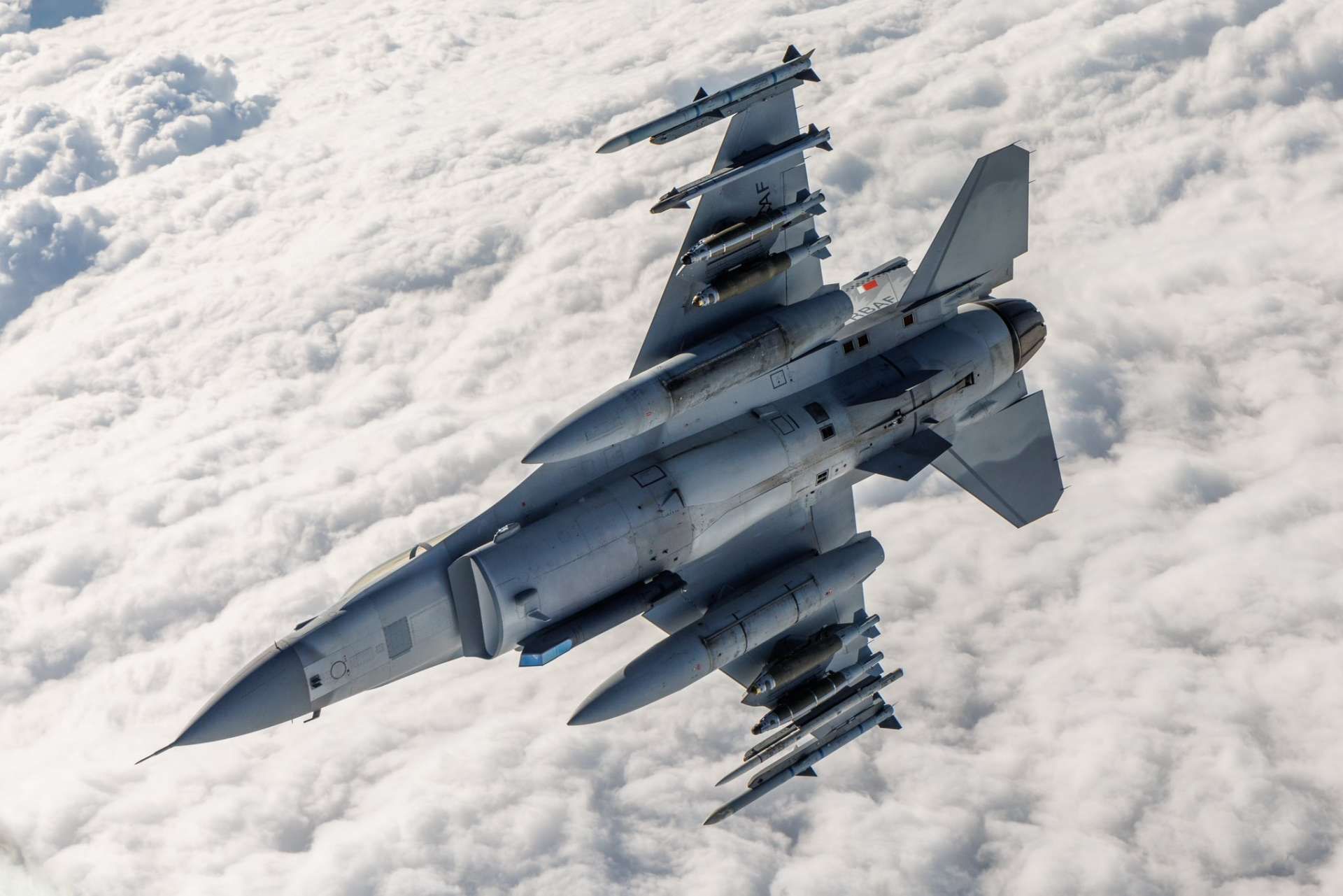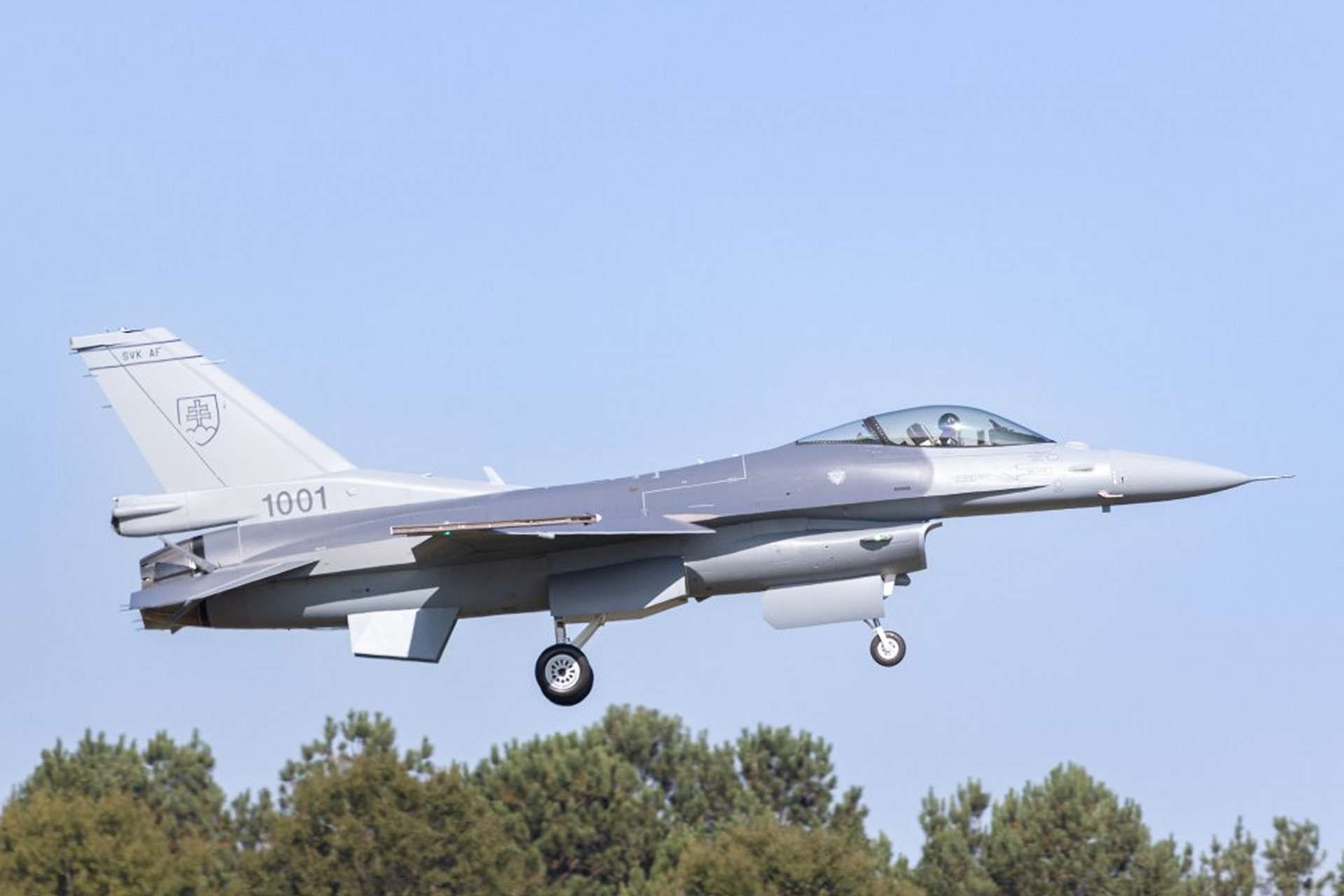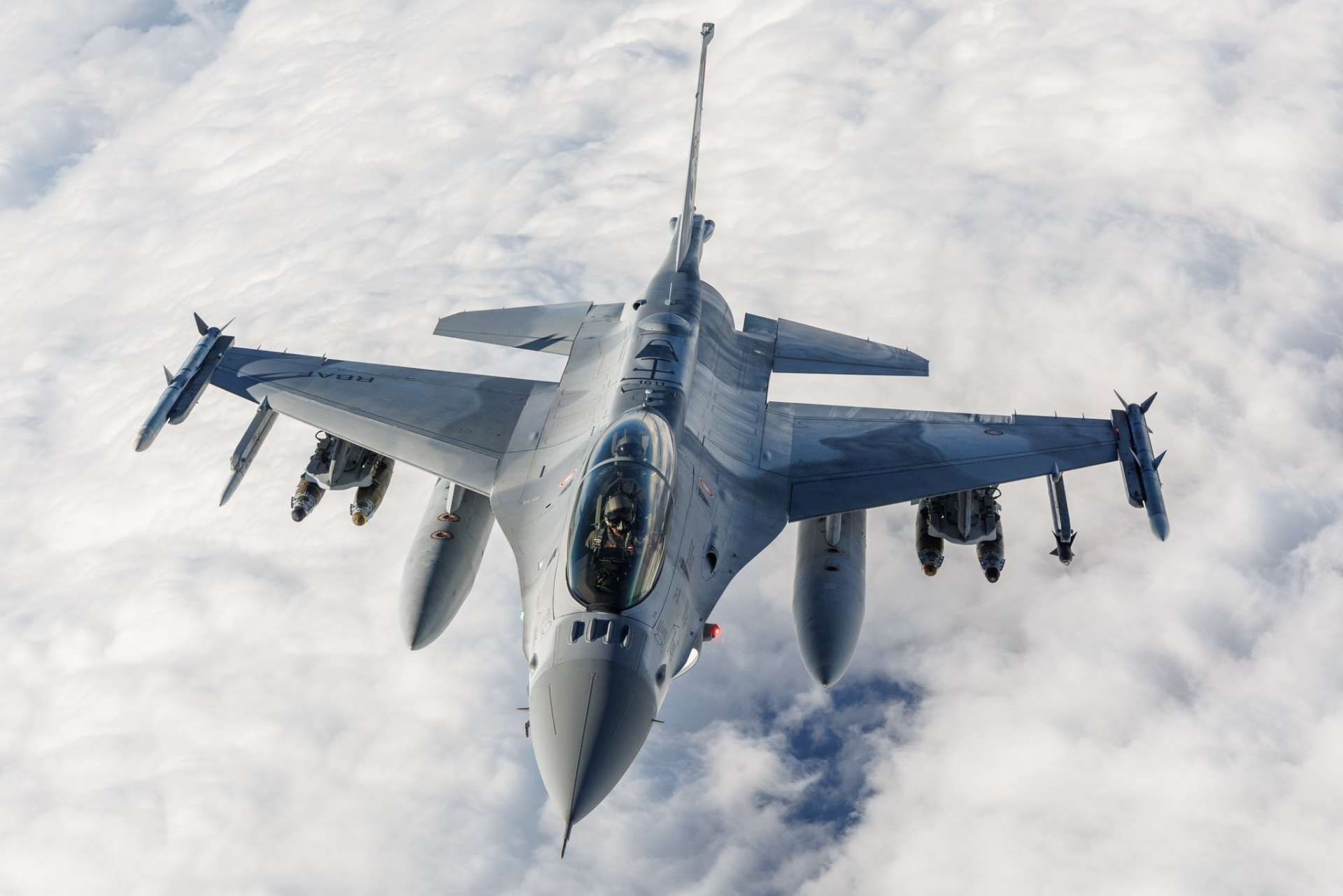Breaking News
Slovakia receives two of 14 American F-16 Block 70 jets from Lockheed Martin.
On July 23, 2024, Slovakia marked a significant moment for its armed forces with the arrival of its first two F-16 Block 70 fighter jets. These jets, piloted by American aviators including a member of the Indiana National Guard, landed at the Malacky-Kuchyňa air base after a nearly ten-hour journey. The ceremonial handover officially introduced these advanced aircraft into the Slovak Armed Forces, attended by President Peter Pellegrini, Deputy Prime Minister and Defense Minister Robert Kaliňák, General Daniel Zmeko, and US Ambassador Gautam Rana, among other notable guests.
Follow Army Recognition on Google News at this link

These two F-16 Block 70 jets, piloted by American aviators including a member of the Indiana National Guard, landed at the Slovakian Malacky-Kuchyňa air base after a nearly ten-hour journey. (Picture source: Slovak MoD)
The event included military honors, the changing of insignia, and a symbolic handing over of keys. The arrival of these jets highlights international cooperation and enhances Slovakia’s defense capabilities in preparation for future security challenges. Slovakia had formally taken possession of these jets, manufactured by Lockheed Martin, earlier this year. However, the aircraft remained in the United States for maintenance training until now. This delivery is part of a 2018 agreement in which Slovakia committed $1.6 billion for 14 jets. Despite delays due to the COVID-19 pandemic, the arrival of these F-16s comes at a critical time as NATO fortifies its eastern borders amidst the ongoing conflict in Ukraine.
Lockheed Martin and Slovakia announced this milestone at Malacky Air Base, emphasizing the importance of the F-16 Block 70 jets in protecting Slovak airspace and strengthening security cooperation among European allies. To date, Lockheed Martin has produced five F-16 Block 70 jets for Slovakia, with the remaining nine jets expected to be delivered by the end of 2025.
The F-16 Block 70/72, also known as the F-16V, is an updated version of the F-16 fighter jet developed by Lockheed Martin. It features the Northrop Grumman APG-83 AESA radar and enhanced avionics, which provide improved target detection and tracking capabilities. The aircraft has an extended structural service life of 12,000 hours, and includes upgrades such as more efficient engines and advanced electronic warfare systems. These improvements enhance the F-16 Block 70/72's capabilities for both air-to-air and air-to-ground missions, making it suitable for various operational requirements.

The F-16 is armed with an internal M61 Vulcan cannon and equipped with 11 hardpoints for various weapons, such as air-to-air missiles like the AIM-9 Sidewinder and AIM-120 AMRAAM, and air-to-ground munitions such as the GBU-12 Paveway II laser-guided bomb and the AGM-65 Maverick missile. (Picture source: Edwards Air Force Base)
This delivery follows Lockheed Martin’s 2019 contract award, valued at nearly $800 million, for the production and support of 14 F-16 Block 70 aircraft. This contract, part of a foreign military sales arrangement, is significant for Slovakia as it transitions from its current fleet of MiG-29s to the more interoperable and capable F-16s. The Slovak Republic's acquisition includes a comprehensive package of advanced systems and weaponry, such as the APG-83 AESA Radars, AIM-120C7 and AIM-9X missiles, and Joint Helmet Mounted Cueing Systems.
OJ Sanchez, vice president and general manager of the Integrated Fighter Group at Lockheed Martin, highlighted the strategic importance of this milestone. He noted that Slovakia is now adopting Europe’s most advanced fourth-generation fighter, which enhances its defense capabilities and readiness for NATO operations. The F-16 Block 70 jets, with features such as the Northrop Grumman APG-83 AESA Radar and the Automatic Ground Collision Avoidance System (Auto GCAS), represent advancements in safety and performance.
Lockheed Martin’s production of the F-16 continues to meet international demand, with a backlog of 128 F-16 Block 70/72 jets to be produced in Greenville, South Carolina. The company recently celebrated the delivery of its 4,600th F-16, demonstrating the aircraft’s relevance and performance over five decades.

This delivery follows Lockheed Martin’s 2019 contract award, valued at nearly $800 million, for the production and support of 14 F-16 Block 70 aircraft for Slovakia. (Picture source: Lockheed Martin)
The F-16 Fighting Falcon’s journey began with its first flight in 1974, developed under the Lightweight Fighter (LWF) program. It was designed to be a highly maneuverable, cost-effective fighter, complementing the more expensive F-15 Eagle. The F-16’s success is attributed to its agility, lower operating costs, and adaptability, leading to widespread adoption and continuous upgrades.
Key features of the F-16 include a frameless bubble canopy, a side-mounted control stick, and a relaxed static stability/fly-by-wire flight control system. These elements contribute to the F-16’s performance, making it a versatile multirole fighter capable of both air-to-air and air-to-ground missions. The aircraft is armed with an internal M61 Vulcan cannon and equipped with 11 hardpoints for various weapons, such as air-to-air missiles like the AIM-9 Sidewinder and AIM-120 AMRAAM, and air-to-ground munitions such as the GBU-12 Paveway II laser-guided bomb and the AGM-65 Maverick missile.
The F-16 has an extensive combat record, being used in conflicts worldwide. The Israeli Air Force achieved the F-16's first air-to-air kill in 1981 and utilized it in Operation Opera against an Iraqi nuclear reactor. During the 1982 Lebanon War, Israeli F-16s achieved 44 air-to-air kills. The USAF deployed F-16s in Operation Desert Storm for air superiority, ground attack, and close air support, and they have also seen action in the Balkans, Afghanistan, Iraq, and Libya.
The F-16 is operated by 25 countries, making it one of the most widely used fighter aircraft globally. Key operators include the United States, Israel, Turkey, and Pakistan, with each employing the F-16 in various roles such as air combat and ground attack. Israel has used the F-16 extensively in high-profile operations, while Turkey and Pakistan have used it in regional conflicts and NATO missions. European countries like Belgium, the Netherlands, Denmark, and Norway have integrated the F-16 into their air forces for NATO missions and international operations.

The F-16 Block 70/72, also known as the F-16V, features the Northrop Grumman APG-83 AESA radar and enhanced avionics, which provide improved target detection and tracking capabilities. The aircraft has an extended structural service life of 12,000 hours, and includes upgrades such as more efficient engines and advanced electronic warfare systems. (Picture source: Edwards Air Force Base)


























